The rise of purpose-driven careers: Finding work that matters
The career landscape is undergoing a profound transformation. More than ever, professionals are seeking purpose-driven careers. This shift reflects a deeper desire for alignment between personal values and workplace missions, as employees prioritize impact over income. Whether it’s advancing sustainability, fostering social change, or improving global health, purpose-driven work has become a powerful motivator for job seekers and a competitive advantage for employers. For those seeking to align their career paths with purpose, recruitment services in Cape Town can play a crucial role in connecting like-minded professionals with organizations that share their values. In this blog, we’ll explore what defines purpose-driven careers, why it’s gaining momentum, and how both job seekers and companies can adapt to thrive in this purpose-oriented era.
What does “Purpose-Driven Work” mean?
At its core, purpose-driven work is about more than just completing tasks or meeting performance goals—it’s about doing work that aligns with your personal beliefs, values, and passions. It’s a shift from simply working for financial gain to actively contributing to something meaningful that resonates on a deeper, more personal level.
When people pursue purpose-driven careers, they prioritize jobs where their daily contributions directly or indirectly make a positive impact on society, the environment, or their community. These roles often go beyond the traditional confines of a job description to create opportunities for employees to feel part of a larger mission.
Key characteristics of purpose-driven work
Purpose-driven work typically involves:
Alignment with personal beliefs
Employees choose organizations or roles that match their values, whether it’s promoting sustainability, advocating for equality, or advancing global health.
Contributing to a broader goal
The work feels connected to something bigger than individual tasks—such as protecting the environment, improving education, or reducing inequality.
Opportunities for personal growth
Purpose-driven roles often provide a sense of personal accomplishment and help individuals grow in meaningful ways, both professionally and emotionally.
Examples of purpose-driven work
Here are some examples of what a purpose-driven job might look like in practice:
Sustainability-focused companies
These organizations actively work toward reducing environmental footprints, adopting green technologies, or combating climate change. Employees here can see the tangible impact of their work in creating a healthier planet.
Corporate social responsibility (CSR) initiatives
Many organizations now embed CSR into their business models, addressing societal issues such as poverty, education, or disaster relief. Employees involved in these initiatives play a direct role in solving pressing global challenges.
Mission-driven startups
Startups often tackle specific issues like access to clean water, affordable healthcare, or renewable energy. Working in these settings allows employees to contribute to groundbreaking innovations that improve lives.
Diverse and inclusive workplaces
Some employees find purpose in fostering equity and inclusion within the workplace, championing initiatives that ensure everyone feels valued and represented.
Job seekers: How to find purpose-driven careers
Finding a purpose-driven career doesn’t happen overnight. It requires clarity, research, and strategic decision-making. Below are practical tips for job seekers looking to align their work with their values.
1. Identify your core values
Begin by reflecting on what truly matters to you. Ask yourself:
– What issues or causes am I passionate about?
– What kind of impact do I want my work to have?
– Which values are non-negotiable for me?
For instance, if you’re passionate about sustainability, consider roles in industries like renewable energy, conservation, or green technology.
2. Research potential employers
Before applying for a role, dig into a company’s mission, values, and culture. Check for:
– Evidence of social impact initiatives.
– Employee testimonials on platforms like Glassdoor.
– Press releases or annual reports showcasing their commitment to CSR.
3. Highlight your purpose during interviews
Employers want to hire individuals who genuinely care about their work. During interviews, communicate how your values align with the organization’s mission.
How can companies adapt to attract purpose-driven talent?
Companies that align their operations, culture, and employer branding with meaningful values stand a far better chance of attracting and retaining top talent. Here’s how employers can rise to the occasion:
1. Define and communicate your mission and values
The foundation of attracting purpose-driven talent lies in having a clear mission and values that resonate with employees.
Articulate your purpose
Identify what your company stands for beyond profits. Are you driving innovation in sustainability, championing diversity, or making strides in healthcare access?
Integrate your mission into branding
Ensure your purpose and values are evident in all your public-facing materials, from your website to social media and job postings. Candidates should immediately recognize what your company stands for.
Be authentic
Purpose-driven employees are quick to spot inauthenticity. Back up your mission with real actions and initiatives. For example, if you champion environmental sustainability, showcase tangible progress such as reducing carbon emissions or switching to renewable energy.
2. Offer impactful work opportunities
Employees want to feel that their contributions make a difference. Employers should create roles and opportunities where employees can see the direct impact of their work.
Involve employees in meaningful projects
Highlight opportunities where team members can contribute to significant causes, such as community outreach, social impact initiatives, or groundbreaking product development.
Tie roles to a bigger picture
Help employees understand how their work supports the company’s mission. For example, a marketing professional could see their efforts as helping spread awareness of a product that addresses a major societal issue.
3. Prioritize corporate social responsibility (CSR)
A strong CSR program not only supports societal and environmental well-being but also enhances employee pride and engagement. Purpose-driven talent is particularly attracted to companies making a tangible difference in the world.
Focus on global and local impact
Your CSR initiatives can range from addressing global issues like climate change to supporting local community programs.
Align CSR with your industry
Ensure your CSR initiatives are relevant to your business. For instance, a tech company could focus on closing the digital divide by donating technology to underserved communities.
Involve employees in CSR activities
Create opportunities for employees to participate in volunteer work or social initiatives. This fosters a sense of purpose and builds camaraderie among teams.
4. Empower employees to drive change
Purpose-driven employees want to feel like active participants in driving the company’s mission, not just passive contributors. Empower your workforce by giving them autonomy and opportunities to innovate.
Encourage ownership
Allow employees to take the lead on projects and suggest ideas that align with the company’s mission. This not only increases engagement but also drives a sense of accountability and pride in their work.
Provide resources and tools
Equip employees with the resources they need to contribute meaningfully, whether that’s funding for social initiatives, access to training, or the freedom to collaborate across teams.
Celebrate employee contributions
Recognize and reward individuals or teams who go above and beyond to advance the company’s purpose. Public acknowledgment can further inspire others.
5. Be transparent and accountable
Purpose-driven employees expect their employers to walk the talk. Transparency and accountability are key to earning their trust and loyalty.
Share progress on purpose-driven goals
Regularly update employees on your company’s initiatives and their outcomes, whether it’s reducing environmental impact or supporting community programs.
Be honest about challenges
If you face setbacks, acknowledge them and communicate your plan to address them. Authenticity builds credibility and fosters a sense of shared purpose.
Engage employees in the conversation
Solicit feedback and ideas from employees on how the company can improve its purpose-driven efforts.
By embracing these strategies, companies can position themselves as employers of choice for purpose-driven talent. Beyond recruitment, these changes create a workplace culture where employees feel genuinely inspired to contribute, helping organizations thrive in a rapidly evolving job market.
Embracing Purpose to Build a Better Future
The rise of purpose-driven careers marks a profound cultural shift in the workforce, reshaping how both employees and employers approach work. For job seekers, it’s an opportunity to align their professional lives with their passions and values, contributing to meaningful change in the world. For employers, it’s a chance to attract and retain top talent by fostering a culture of impact, authenticity, and shared purpose.
We understand the importance of connecting the right people with the right opportunities to create purpose-driven success. Whether you’re a professional searching for meaningful work or a business seeking talent that aligns with your mission, we’re here to help.
Visit MASA today and let us guide you toward building a career or a team that truly matters.












